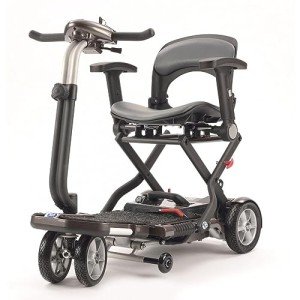5 Reasons Mobility Devices Is A Good Thing
Understanding Mobility Devices: Enhancing Independence and Quality of Life
In today's fast-paced world, the desire for mobility is universal. However, certain medical conditions or age-related challenges can impede motion, causing an ongoing search for help. Mobility devices act as essential tools to improve independence, enhance lifestyle, and allow individuals to engage completely in their neighborhoods. This post offers an extensive introduction of mobility devices, including their types, features, choice criteria, and more.
Types of Mobility Devices
Mobility devices vary from basic aids to complicated equipment, tailored to satisfy numerous needs. Below is a table summarizing typical types of mobility devices:
Type of Device
Description
Ideal For
Walkers
Four-legged support devices that provide remarkable stability while strolling.
People requiring additional assistance.
Walking canes
Single or three-legged sticks that enhance balance and assistance walking.
Those with small mobility troubles.
Wheelchairs
Seats mounted on wheels, available in manual and electric variations.
People with limited or no mobility.
Scooters
Electric lorries designed for outdoor use and ease of navigation.
Those who can't stroll long ranges.
Crutches
Devices that assist people move weight away from an injured leg.
Individuals recuperating from leg injuries.
Rollators
Walkers with wheels, seats, and brakes for boosted mobility.
Users needing rest alternatives while strolling.
Raise Chairs
Reclining chairs that help users in standing and taking a seat.
Seniors or those with mobility restrictions.
Mobility Scooters
Small electric lorries for minimal mobility, often utilized outdoors.
People requiring help over cross countries.
Key Features of Mobility Devices
When picking a mobility device, numerous key features must be thought about to ensure optimal functionality and ease of use:
- Weight Capacity: Understanding the gadget's weight limitation is crucial for security and effectiveness.
- Adjustability: Devices ought to be adjustable in height and width to fit the user conveniently.
- Mobility: Lightweight and foldable options are necessary for users who travel or require transportation.
- Stability and Safety: Look for functions like anti-tip wheels and strong structures to boost security.
- Reduce of Use: Simple mechanisms and user-friendly styles can make a substantial difference in day-to-day usage.
- Comfort: Ergonomic styles and cushioned seats can enhance the user experience.
Choosing the Right Mobility Device
Picking the best mobility gadget can be a daunting task. Here are some steps to direct the decision-making procedure:
- Assess Needs: Evaluate the individual's mobility obstacles and daily activities.
- Consult a Professional: Engage healthcare professionals who can supply recommendations based on the individual's physical condition.
- Trial Options: If possible, trial various devices to identify convenience and performance.
- Review Budget: Consider the expense of the gadget, including any extra functions or adjustments needed.
- Research study Options: Determine the very best brands and designs by checking out reviews and contrasts.
Table: Comparative Analysis of Popular Mobility Devices
Gadget
Benefits
Disadvantages
Walkers
Outstanding stability, promotes strolling.
Large, may limit movement in small areas.
Walking sticks
Lightweight, improves balance.
Might not provide sufficient support for severe mobility issues.
Wheelchairs
Perfect for those with substantial mobility restrictions.
Can be cumbersome, especially in indoor environments.
Scooters
Great for outdoor usage, easy to maneuver.
Limited indoor use, heavier.
Rollators
Supplies rest choice, easy to move.
May need more area than standard walkers.
Raise Chairs
Comfy, helps transition from sitting to standing.
More costly, bigger footprint.
Regularly Asked Questions (FAQs)
1. What is a mobility gadget?
A mobility device is any tool created to assist individuals in moving and navigating their environment. This consists of walkers, wheelchairs, scooters, and crutches.
2. How do I know which mobility device is best for me?
Consider your specific mobility difficulties, physical capabilities, and way of life needs. Consulting with health care experts can likewise offer tailored recommendations.
3. Are mobility devices covered by insurance coverage?
Lots of insurance strategies, consisting of Medicare, might cover certain mobility devices. It's essential to examine with your insurance coverage supplier for specific protection details.
4. Can I lease a mobility gadget rather of buying one?
Yes, many medical supply stores and pharmacies provide leasings for mobility devices. Clare Arton is advantageous for people with momentary mobility concerns.
5. How can I preserve my mobility gadget?
Routine maintenance is essential. It includes cleaning the gadget, looking for wear and tear, and guaranteeing all parts are operating properly.
The Impact of Mobility Devices on Quality of Life
Mobility devices considerably enhance the quality of life for individuals with restricted mobility. They foster independence, motivate social interaction, and improve access to important services and leisure activities.
- Increased Independence: Users can navigate their communities, go to events, and participate in hobbies without relying on others.
- Social Engagement: Mobility devices assist in involvement in social gatherings, thereby combating feelings of seclusion.
- Improved Safety: Devices provide stability and decrease the danger of falls, promoting user self-confidence.
Mobility devices are more than just tools for movement; they are gateways to self-reliance and quality living. By understanding the various types of mobility aids available, their key functions, and factors to consider for choosing the ideal gadget, individuals can make educated choices about their mobility needs. Eventually, the best mobility gadget can lead to a more active, fulfilling life. Whether it's a walker, wheelchair, or scooter, the right choice contributes substantially to enhancing the mobility and independence of users.
